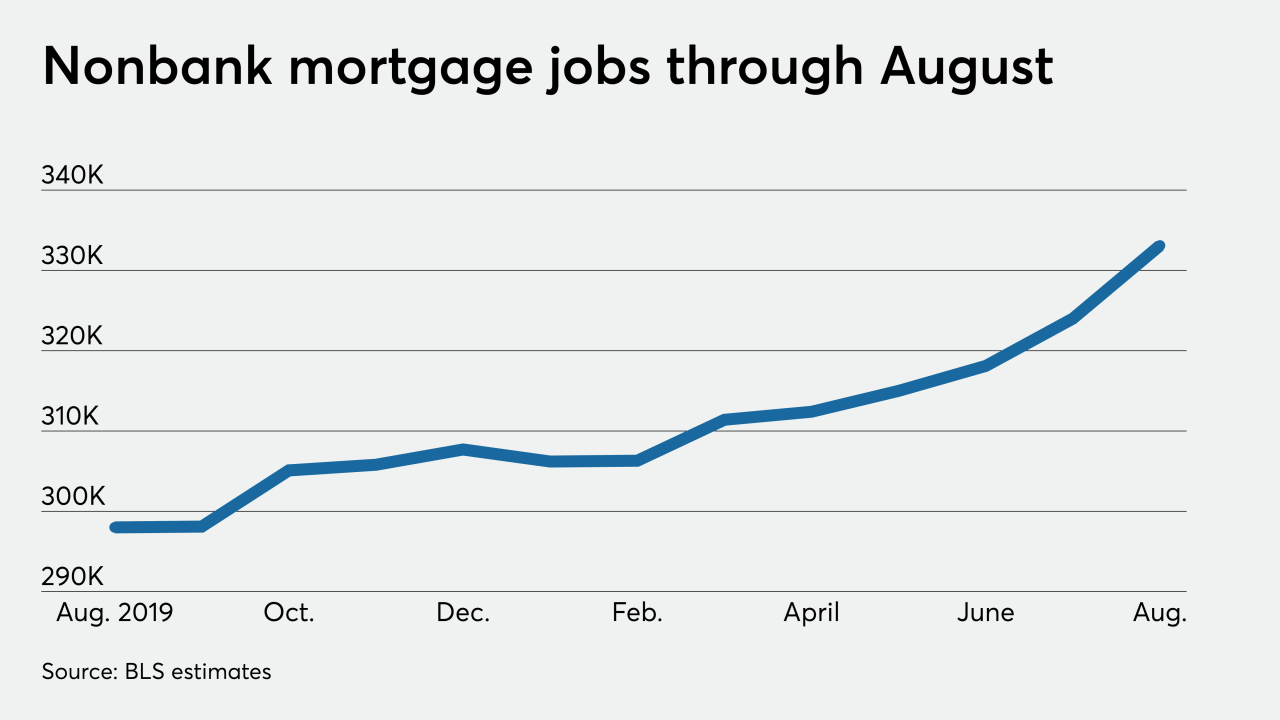-
2020’s mortgage employment numbers proved to be slightly higher than previously estimated when reconciled with the Bureau of Labor Statistics’ annual business census.
February 5 -
The estimates in the Bureau of Labor Statistics latest numbers were only marginally higher than the previous month, which may reflect more deliberate hiring and a preholiday slowdown.
January 8 -
Even with a slight downward revision to September’s numbers, employment in the industry remained incredibly high through October as home-loan refinancing continued to surge.
December 4 -
With the coronavirus cutting employment or wages in 32% of households, the number of potential homebuyers could shrink and cause home price growth to hit its inflection point, analysts say.
November 13 -
The forbearance rate continued recovering in lockstep with employment improvement, according to the Mortgage Bankers Association.
November 9 -
A number of unknowns about the election and the coronavirus response kept consumer confidence in check, according to Fannie Mae.
November 9 -
The new record in third-party originator hiring numbers adds to indications that some lenders have been leaning harder on the wholesale channel to address capacity issues amid the origination boom.
November 6 -
There was an estimated total of 333,100 people on nonbank mortgage banker and broker payrolls in August, and that's the highest recorded since at least 2010.
October 2 -
As bidding wars raged on and mortgage rates remained near historic lows, housing market confidence grew in August, according to Fannie Mae.
September 8 -
While employment typically ebbs as home buying slows in the fall, several nonbanks have ambitious hiring plans in the works, which call for them to add thousands of workers by year-end.
September 4









